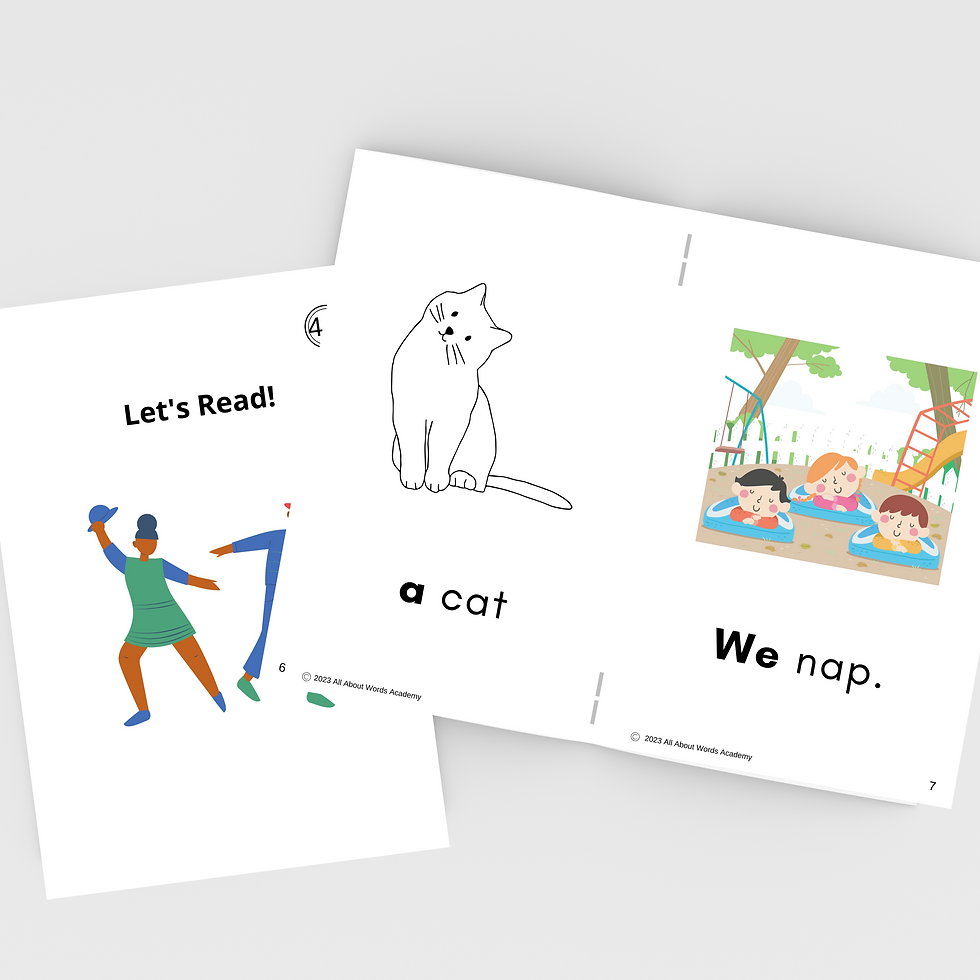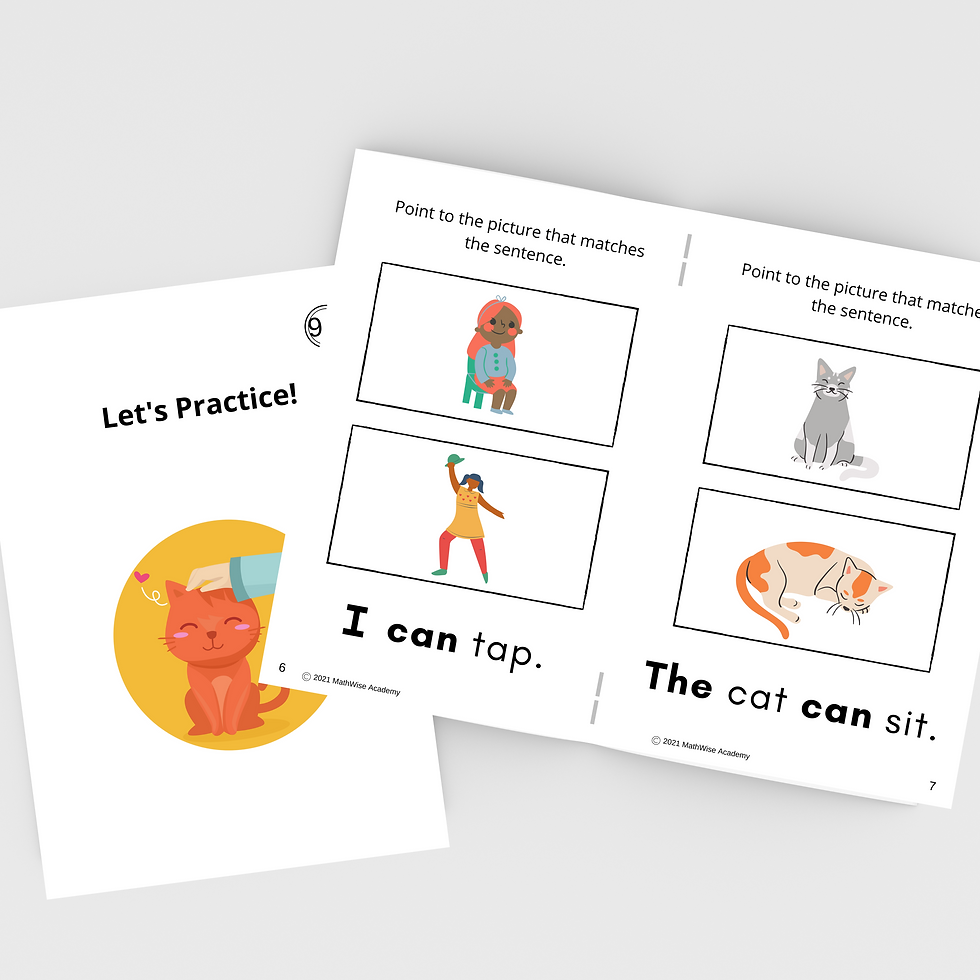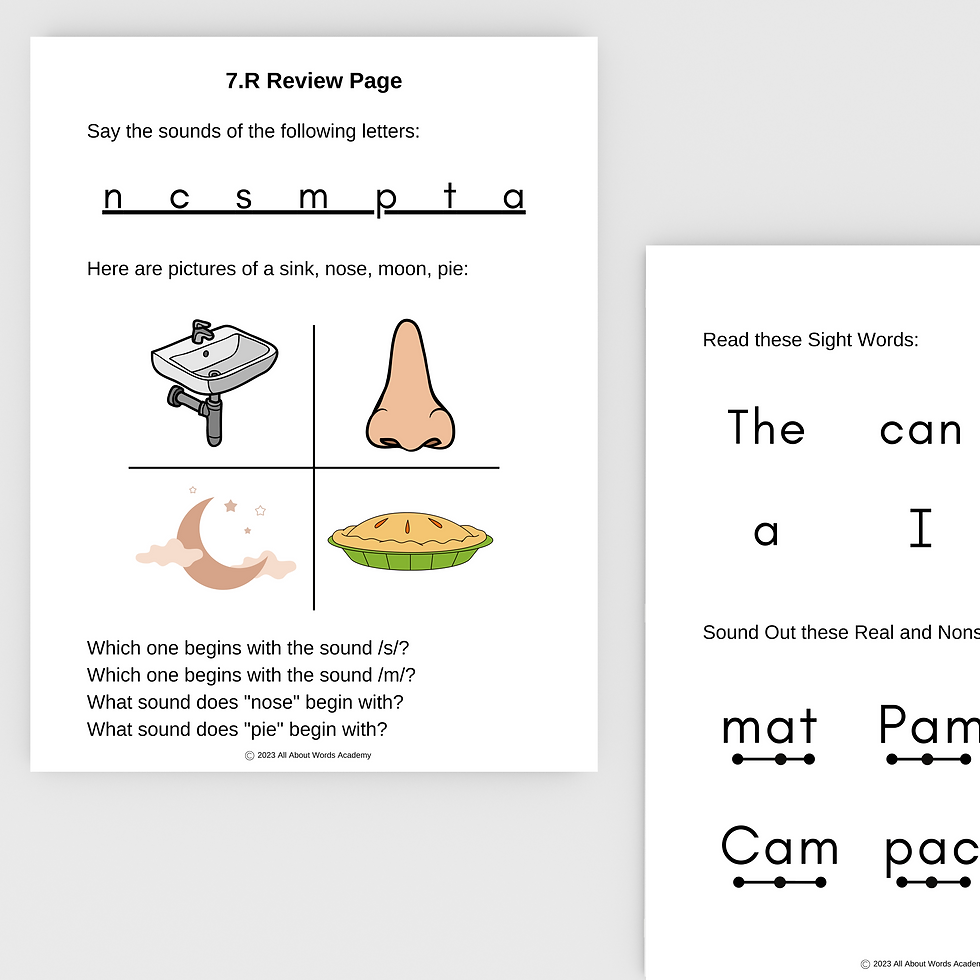Reading Books
- All About Words
- Aug 9, 2023
- 2 min read

Now that students have practiced letter sounds and blending CVC words, they are ready for the Reading Book. Each "week" has a reading book to practice using the new words they have been practicing reading, along with a few sight words.
ABOUT
These reading books begin with reviewing blending CVC words, often words that they will be using throughout the book. This gives students a warmup before reading.
Each reading page is accompanied by a picture. As students begin reading, these pictures will provide some additional support. However, to help students avoid guessing, the pictures become less "descriptive" of the sentence they will be reading. We often reuse the same
picture for different sentences to help students rely on the text and not the picture. For example, a picture of a cat sitting could be: "I see a cat." or "The cat can sit." Eventually, we introduce pages that have two pictures. After a student reads the text, they can point to the
picture that it matches, helping them become active readers. (This is introduced in book 9.3, "Let's Practice!")

We also put the sight words in bold to indicate that these are words that student will most likely not be able to sound out. (The exception to this is the word "can". We treat it as a sight word or high-frequency word, but students will also practice sounding it out. We do this mainly because the sound of "a" changes slightly when paired with an "n".) Help students as needed with the words in bold; they will learn these words by exposure and practice. (Sight words can also be practiced with the provided writing activity.)
These books do not have a story, but rather provide isolated reading practice on each page. This allows students to focus on one page at a time to practice their decoding skills. We will have story books available soon!
TIPS & TRICKS
Read these books with students several times, and print off extra copies to send home!
While reading, I sometimes cover up the pictures if a student is beginning to rely too much on them. Then, after they read the sentence, we "check" what they've read with the picture.


